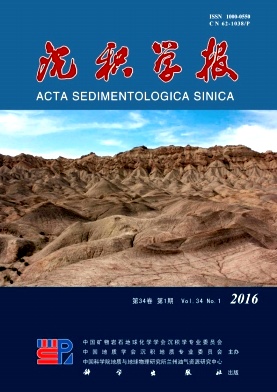Distribution and Origin of the Third Member of Feixianguan Formation in the Jiannan Area:Comprehensive analysis from three-dimensional seismic, petrography, and geochemistry
doi: 10.14027/j.cnki.cjxb.2016.01.016
- Received Date: 2014-11-03
- Rev Recd Date: 2015-02-08
- Publish Date: 2016-02-10
-
Key words:
- dolomitization /
- dolomitizing fluid /
- seismic attribute /
- Feixianguan Formation /
- Jiannan area
Abstract: The third member of Feixianguan Formation (T1f3) is an important gas reservoir in the Jiannan area which consists mainly of tight grainstones and crystalline dolostones. However, the high quality reservoir is limited in the dolostones. Therefore, understanding the distribution mechanism of dolostones is prerequisite to predict the distribution of high-quality reservoir. In this study, the dolomite-content logs were firstly constructed based on the well logs and cores. Secondly, the correlation between dolomite-contents and seismic attributes derived from 3-D seismic volume were defined using the method of multiattribute transforms to predict the distribution of dolomite in the Jiannan area. At last, the predicted dolomite distribution and paleogeography were integrated to explain the source and nature of the dolomitizing fluid.
The dolostone of T1f3 in the Jiannan area consist mainly of fine-grained, planar-e to planar-s crystals, and minor nonplanar crystals. Under CL, dolomite crystals show zoned to uniform dull red luminescence. Five most effective attributes were selected based on the method of multiattribute transforms. These attributes are Amplitude Weighted Frequency, Amplitude Weighted Cosine Phase, Amplitude Envelope, Quadrature Trace and Instantaneous Phase. Integration dolomite distribution and paleogeography indicates that dolomites mainly occur along the opposing margins of a trough. During progressively burial, owing to the increase in pore pressure and different compactability of sediments, Mg-rich, seawater-derived, compaction flow from trough sediments moved laterally and preferentially through less rapidly compacting, trough-margin shoals, which caused extensive dolomitization in shoals. Shoals along margins of the trough can be recognized as important exploration targets.
| Citation: | WANG GuangWei, LI PingPing, HAO Fang, ZOU HuaYao, YU XinYa. Distribution and Origin of the Third Member of Feixianguan Formation in the Jiannan Area:Comprehensive analysis from three-dimensional seismic, petrography, and geochemistry[J]. Acta Sedimentologica Sinica, 2016, 34(1): 168-180. doi: 10.14027/j.cnki.cjxb.2016.01.016 |






 DownLoad:
DownLoad: